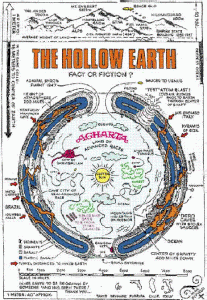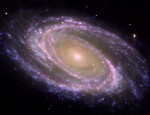
Photo: UFO’S from Inside the Earth. Source: Unknown.
Some truth, some myth, some speculation. You figure it out. Highly Recommended! . . . EDITOR
From Before it’s News By LavenderRose
Tuesday, March 19, 2013 1:12
Heaven is an inner, central, and solar location, whereas Paradise and Hell are outer, earthly, or planetary locations A good example of this is the common wheel; the hub or center represents Heaven whereas the rim represents Earth, of which Paradise and Hell are part. The spokes of the wheel represent the interconnecting roads or gateways between the two.
The horoscope chart is another example with its center, spokes and rim, as is Plato’s landscape description of the legendary city of Atlantis. The Atlantis construct, however, which is a series of rings one inside the other, goes farther by including an even more interior or central component called the New Jerusalem(see diagram below). . . . Read complete extensive report w/ photos, videos, diagrams and more
~~~~~~~~~~~~~~~~~~~~~~~~~~~~~~~~~~~~~~~
Photo: Hollow Earth Diagram by Max Fyfield. Used with permission of the artist.
Go Deeper: Is the Earth Hollow? . . . And if so, What Waits Below? by Dennis Crenshaw
Letter to a Skeptic by Dennis Crenshaw
Science and the Hollow Earth Theory by Dennis Crenshaw
Go EVEN Deeper: Site Guide (Dennis Crenshaw’s Early Research ~1990s)








